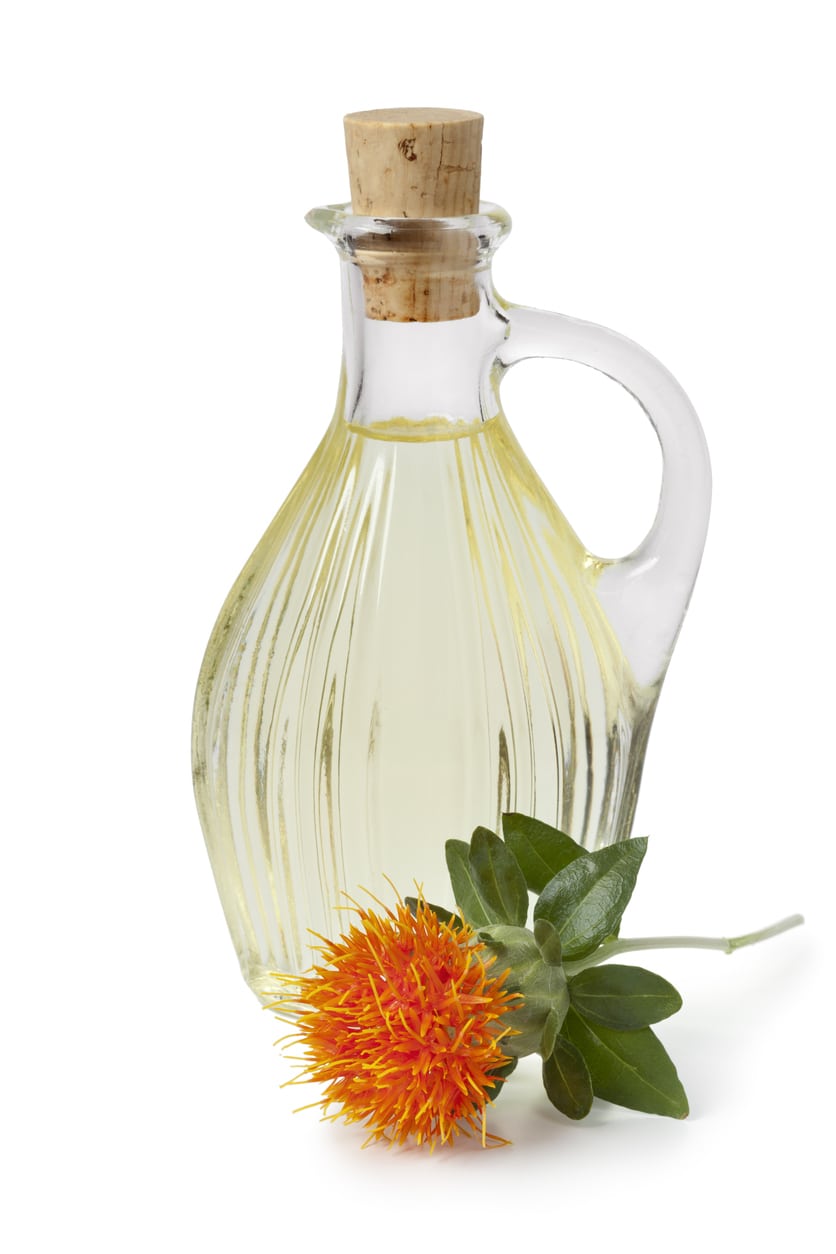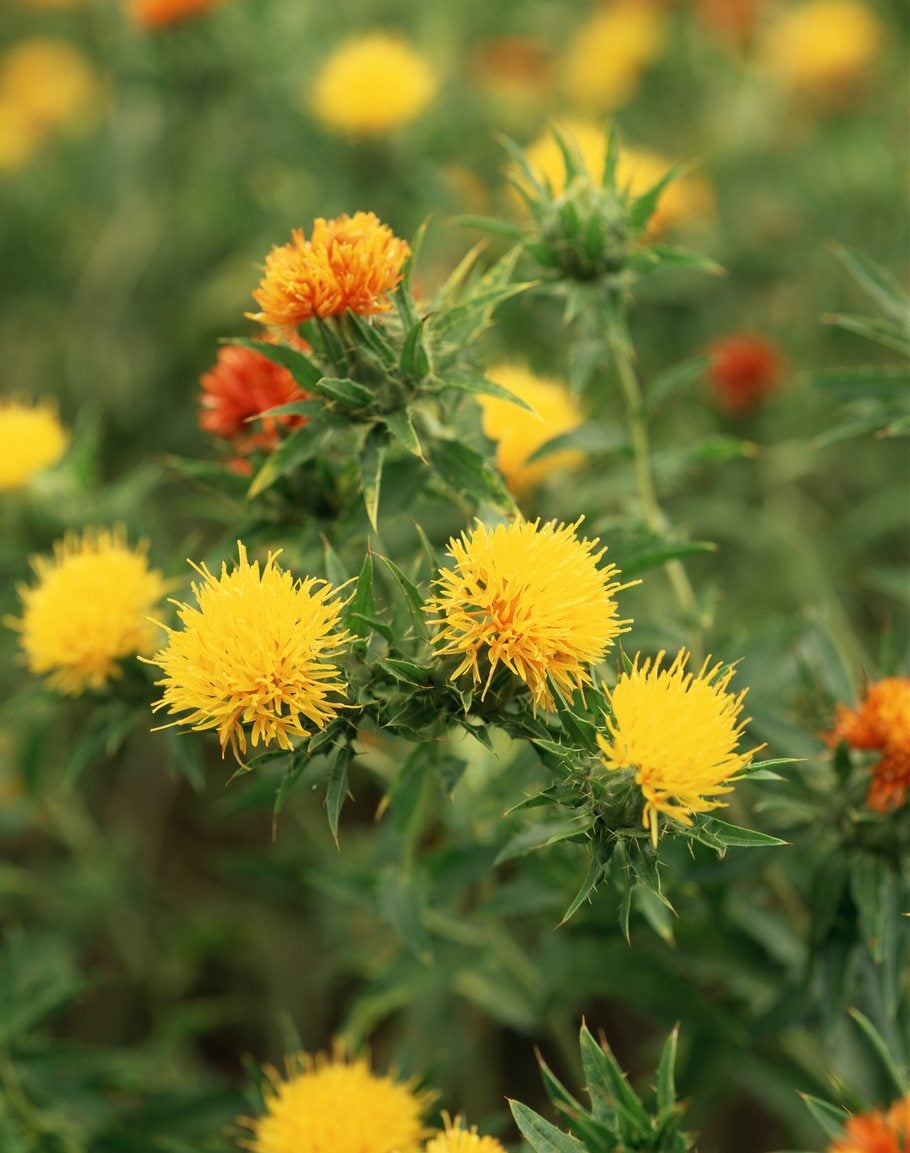What Is Safflower Oil – Uses And Benefits Of Safflower Oil

If you’ve ever read the list of ingredients on say a bottle of salad dressing and saw that it contained safflower oil, you may have wondered “what is safflower oil?” Where does safflower oil come from – a flower, a vegetable? Are there any health benefits to safflower oil? Inquiring minds want to know, so keep reading the following safflower oil information for answers to these questions as well as the uses for safflower oil.
What is Safflower Oil?
Safflower is an annual broadleaf oilseed crop that was grown primarily in areas of the western Great Plains. The crop was first propagated in 1925 but was found to have insufficient oil content. In successive years, new varieties of safflower were developed that contained increased oil levels.
Where Does Safflower Oil Come From?
Safflower does indeed have a flower, but it is cultivated for the oil that is pressed from the seeds of the plant. Safflower thrives in arid regions with fairly high temperatures. These conditions allow the blooms to go to seed in early fall. Each flower harvested has between 15 and 30 seeds. Today, about 50% of the safflower grown in the United States is produced in California. North Dakota and Montana grow most of the remainder of that for domestic productions.
Safflower Oil Information
Safflower (Carthamus tinctorius) is one of the oldest cultivated crops and dates back to ancient Egypt on textiles dating to the Twelfth Dynasty and on safflower garlands adorning the tomb of the pharaoh Tutankhamun. There are two types of safflower. The first variety produces oil that is high in monounsaturated fatty acids or oleic acid and the second type has a high concentration of polyunsaturated fats called linoleic acid. Both varieties are very low in saturated fatty acids in comparison to other types of vegetable oil.
Benefits of Safflower Oil
Most of the safflower that is produced contains about 75% linoleic acid. This amount is significantly higher than corn, soybean, cottonseed, peanut, or olive oils. Scientists are in discord as to whether linoleic acid, which is high in polyunsaturated acids, can help to decrease cholesterol and the associated heart and circulatory issues. Studies have shown however, that the high levels of omega-9 fatty acids in safflower oil improves the body’s immune system and lowers LDL or “bad” cholesterol. Unfortunately, safflower does not contain high levels of vitamin E, an antioxidant that protects the body from free radicals.
Safflower Oil Uses
Safflower was originally grown for the flowers which were used in making red and yellow dyes. Today, safflower is grown for oil, meal (what is left after pressing the seed), and birdseed. Safflower has a high smoke point, which means it is a good oil to use for deep frying. Safflower has no flavor of its own, which also makes it useful as oil to bulk up salad dressings. Not only does it have a neutral flavor but it does not solidify in the refrigerator as other oils. As industrial oil, it is used in white and light colored paints. Like other vegetable oils, safflower oil can be used as a diesel fuel substitute, however, the expense in processing the oil makes it cost prohibitive to use realistically. Disclaimer: The contents of this article is for educational and gardening purposes only. Before using or ingesting ANY herb or plant for medicinal purposes or otherwise, please consult a physician or a medical herbalist for advice.
Gardening tips, videos, info and more delivered right to your inbox!
Sign up for the Gardening Know How newsletter today and receive a free copy of our e-book "How to Grow Delicious Tomatoes".

Amy Grant has been gardening for 30 years and writing for 15. A professional chef and caterer, Amy's area of expertise is culinary gardening.
-
 Looking For Plants To Give You The Soft And Fuzzies? Try These 5 Fuzzy Leaf Plant Options
Looking For Plants To Give You The Soft And Fuzzies? Try These 5 Fuzzy Leaf Plant OptionsLovers of texture, drama, silver foliage and tactile plants will adore these special sensory garden additions. These fuzzy leaf plant options will leave you all aglow
By Susan Albert
-
 Get Ready For A Summer Of Hummers! Grow These Full Sun Hummingbird Plants and Flowers
Get Ready For A Summer Of Hummers! Grow These Full Sun Hummingbird Plants and FlowersIf you’re lucky enough to enjoy a sunny backyard, make sure you are maxing out on your pollinator opportunities and grow these full sun hummingbird plants and flowers
By Tonya Barnett
-
 Picking Safflower Heads: How To Harvest Safflower Plants
Picking Safflower Heads: How To Harvest Safflower PlantsSafflowers are more than just cheerful, bright flowers. They can be a crop too. If you want to learn more about the benefits of a safflower harvest, this article will help. We’ll give you information on harvesting safflower plants and tips on when to pick safflowers.
By Teo Spengler
-
 Safflower Information – How To Grow Safflower Plants In The Garden
Safflower Information – How To Grow Safflower Plants In The GardenSafflower is predominantly grown for its oils. Safflower?s growing requirements are uniquely suited for arid regions. The following article contains safflower information on how to grow and care for safflower plants.
By Amy Grant